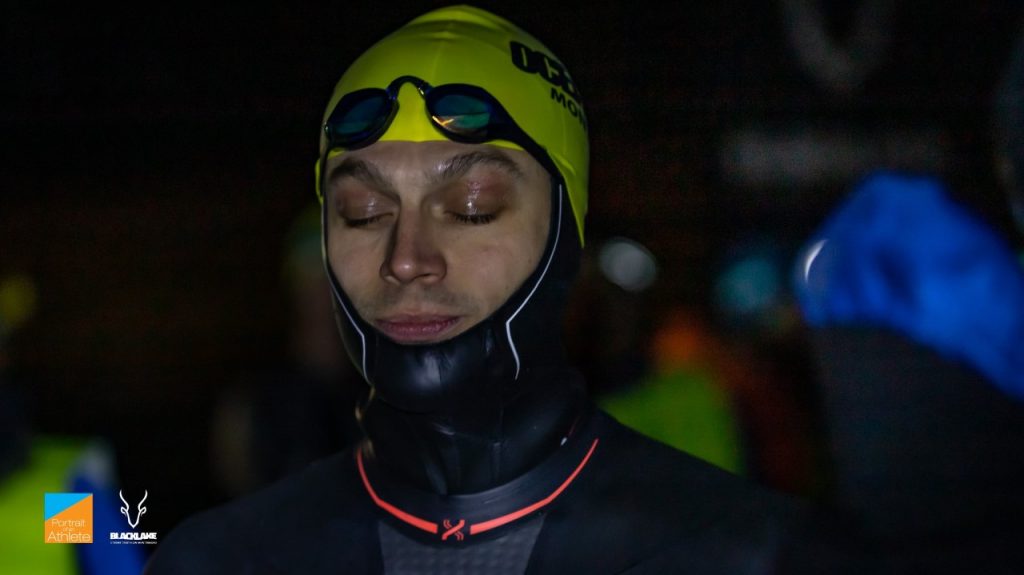Neoprene Swim Hoods – Retain the Heat
Open water swimming through the colder months does have multiple benefits aside from a sporting keep-fit outlook. The effects of cold water on the immune system have been studied widely, showing cold water helps to boost the white blood cell count because the body is forced to react to changing conditions. Over time, your body becomes better at activating its defences. Also, many studies have identified the link between cold water and stress reduction.

For triathletes it has benefits from a technical and tactical aspect. How many of us have gone to the first race of the season and entered the water exclaiming ‘the waters freezing’ when it’s actually 16°C plus. From the outset you’re focusing on the temperature rather than the swim. Whereas, had you been swimming in water below 14°C throughout the winter, slipping into water at 16°C would be like a swim in the Med, allowing you to focus entirely on your swim and giving you first mover advantage over your competitors.
SEA WATER V FRESH WATER SWIMMING – IS THERE A DIFFERENCE?
Cold water robs your body of heating and so we take steps to wear appropriate wetsuits to retain body heat. It is easy to forget that we lose heat from our bodies much quicker in the water than we do on land. Even though the air temperature might be very warm, the water can take the heat away from you 20 times quicker than in air.
It is estimated that 20% to 40% of a swimmer’s body heat escapes through his or her head, therefore it is a good idea to wear a swimming hood, particularly for those winter swims. By insulating your heat-producing head, your entire body will remain warmer and less fatigued because it isn’t working to replace the heat that is lost out of your hoodless head.
Neoprene Hood
Most hoods are made out of neoprene, which is a very spongy material. The reason neoprene is such a popular swim attire material is because is it made of countless air bubbles, which trap the heat produced by the swimmer’s body. The trapped heat, in turn, heats the water that is trapped between the swimmer’s head and the neoprene. The neoprene traps the diver’s natural heat and keeps the heat from transferring to the open water.
Our Hood Picks.
The market is awash with swim hood picks so we search for ‘value for money’ and also factor in that quality must match or exceed expectations and we narrowed it down to the following:

The Bluedive wetsuit hood is on offer with a 67% discount and retails at only £9.06. As always, such bargain basement offers are only available while stocks last. This hood with it 3mm neoprene thickness which keeps the cold out and the heat in.
The Bluedive has a sizable bib, which can be tucked into the wetsuit at the neck opening. The bib reduces the transfer of water and keeps the swimmer that much warmer. This cold-water hood cover all of the swimmer’s forehead and jaw/chin areas, as well as a considerable amount of the swimmer’s cheeks. Very little of the swimmer face is exposed to the cold water with this style of hood.
Buy from LightintheBox. GBP £9.06 GBP £27.48 67% off

If you’re after a discreet look then look no further than the Yonda Ice Cap. Comfortable one-piece 100% Yamamoto neoprene cap designed without buckles or Velcro, it covers the head and ears with no rubbing. Sometimes simple is best!
The Yonda Ice Cap places a huge focus on thermal properties and comfort. Using the latest technologies by the world’s leading neoprene manufacturer, the ice cap is made from 100 SCS Metal where Titanium alloy is applied to SCS low friction skin which ensures ultra-high thermal insulation. Perfect for cold water temperature, can be worn under a wetsuit hood for double protection and a great piece of kit to wear for early Spring triathlon and Ironman events.
Buy from YondaSports GBP £19.99 GBP £29.99 33.3% Off
So, now you can spend the rest of the day planning your next winter open-water swim and trying to convince your friends and family that you’re not completely nuts





